Fix: Event ID 455 ESENT Error in Windows 10 1903
The Event Viewer of your system may show Event ID 455 ESENT error if the required System folders are missing from their particular place. Moreover, a corrupt user profile or a corrupt Windows installation may also cause the error under discussion.
The user gets the information of the error when he launches the Event Viewer of his system. Usually, the following error description is shown:
svchost (4036,R,98) TILEREPOSITORYS-1-5-18: Error -1023 (0xfffffc01) occurred while opening logfile C:\WINDOWS\system32\config\systemprofile\AppData\Local\TileDataLayer\Database\EDB.log.
This ESENT error does not usually affect the operation of your system but is repeated nearly 10 times every 10 to 20 minutes.
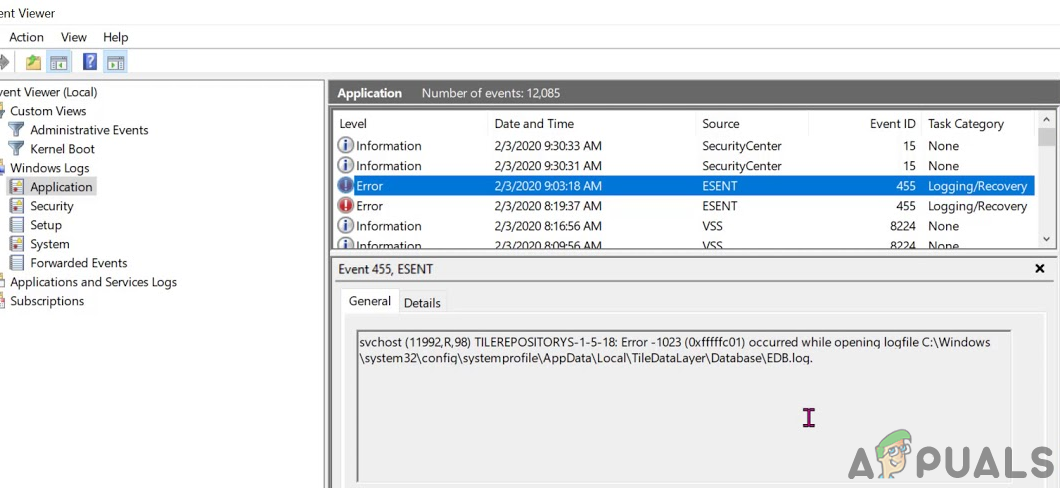
Before moving on with the solutions to fix the event ID 455 ESENT error, make sure your system drivers and Windows are updated to the latest build.
Solution 1: Create Missing Folders in the System32 Folder
You may encounter the error at hand if the folder required by Windows are not present at their particular location. In this context, creating the folder and naming them as required by Windows may solve the problem.
Method 1: Use the File Explorer of Your System
- Navigate to the following path using the File Explorer of your system:
C:\Windows\system32\

Open Config Folder in System32 Folder - Now open the Config folder and if get a prompt by UAC, click on Yes or Continue.
- Then open the following folders one by one:
systemprofile AppData Local
- Now create a new folder and name it TileDataLayer. Now open the folder and create a new folder in it and name it as Database.

Create TileDataLayer and Database Folders - Restart your system and upon restart, check if the Event Viewer is now showing the Event ID 455.
Method 2: Use the Run Command Box
- Open the Run command box of your system by pressing Windows + R keys.
- Now, type the following and then press the Enter key:
C:\Windows\system32\config\systemprofile\AppData\Local\

Open Local Folder - Then right-click in the Local folder and then click on New.
- Now, in the sub-menu, select Folder and name it TileDataLayer.
- Then, open it and create a new folder in it and name it as Database.

Create TileDataLayer and Database Folders - Now, restart your system and check if the ESENT error has vanished.
Method 3: Use the Command Prompt
- Click in the Windows Search box and type:
Command Prompt
- Now, right-click on Command Prompt in the results shown by Windows Search and then select Run as Administrator.

Opening an Elevated Command Prompt - Now, execute the following commandlets (one by one):
cd config\systemprofile\AppData\Local mkdir TileDataLayer cd TileDataLayer mkdir Database
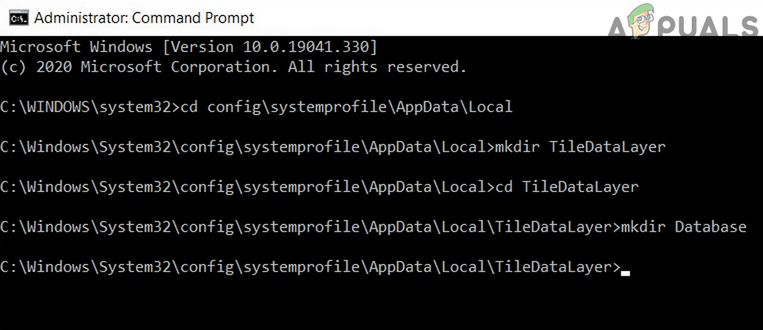
Create Database Folder Using the Command Prompt - Then reboot your system after closing the Command Prompt and upon reboot, check if the issue is resolved.
Solution 2: Remove the Read-Only Attribute of the Database Folder
The read-only file/folder attribute (if applied) lets only a specific group of users read or edit the files or folders. You may encounter the error at hand if the Read-only attribute of the Database folder is enabled that can hinder the access of the folder by system processes. In this context, disabling the Read-only attribute of the Database folder may solve the problem.
- Navigate to the following path by using the File Explorer of your system:
C:\Windows\System32\config\systemprofile\AppData\Local\TileDataLayer\
- Now, right-click on the Database folder and then, in the menu shown, click on Properties.

Open Properties of Database Folder - Now, uncheck the option of Read-only attribute and click on the Apply/OK buttons.
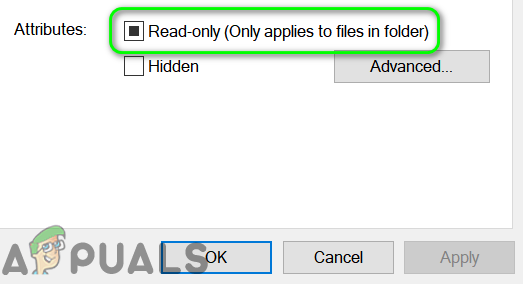
Uncheck the Read-only in the Database Properties - Then restart your system and upon restart, check if the system is clear of the error.
Solution 3: Copy and Paste the EDB.Log File
If creating the missing folders did not solve the issue, then copying the log file (EDB.log) to the Database folder might.
- Navigate to the following path by using the File Explorer of your system:
%localappdata%
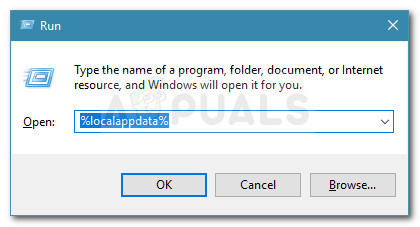
Run dialog box: %localappdata% - Now, open the TileDataLayer folder and then Database folder.
- Now copy the EDB.log file and paste it into the following location:
C:\Windows\System32\config\systemprofile\AppData\Local\TileDataLayer\Database

Copy & Paste the EDG.log File - Then restart your system and upon restart, check if the issue is resolved.
- If not, then try to copy the EDB.log file from another working PC and paste it into the above-mentioned Database folder to check if the issue is resolved.
Solution 4: Create a New Local User Account with Administrative Privileges
You may encounter the error at hand if your user profile is corrupt. In this case, creating the new user profile with administrative privileges may solve the problem.
- Create a new user account of your system and change the account type to an administrator.
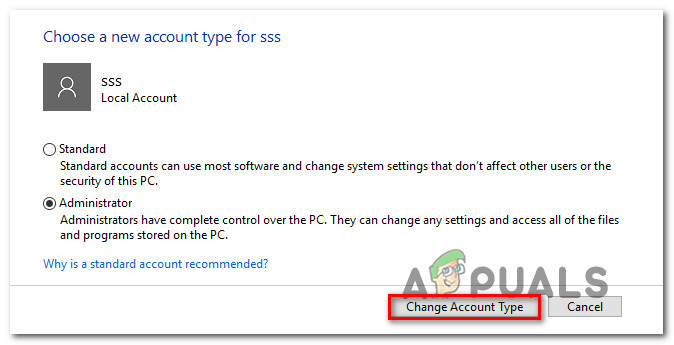
Changing the account type to administrator - Now, check if the issue is resolved. If not, try the above-mentioned solutions with the newly created account and check if the Event Viewer is not showing the Event ID 455 ESENT error.
Solution 5: Restore Your System to An Earlier Date
If you were not able to solve the issue, then reverting your system to an earlier date when the system was clear of the error at hand may solve the problem.
- Restore your system to an earlier date.
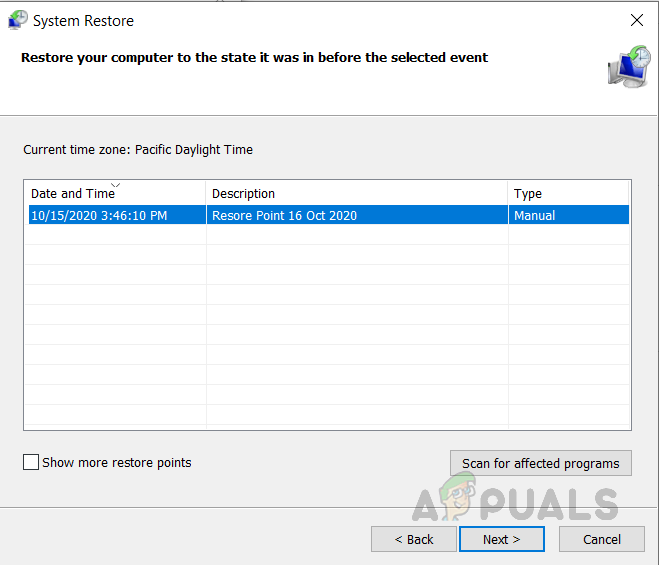
Click a Restore Point - Now, check if the issue is resolved. If not, then try to restore the system to another earlier restore point. You may have to restore your system to more than one restore point to find out the image when the system was clear of the error under discussion.
Solution 6: Perform a Repair or Clean Install of the Windows
If the issue is still there, then check if a repair install of Windows 10 (you may have to try the above-mentioned solutions) solves the issue. If not, then perform a clean install of Windows.




